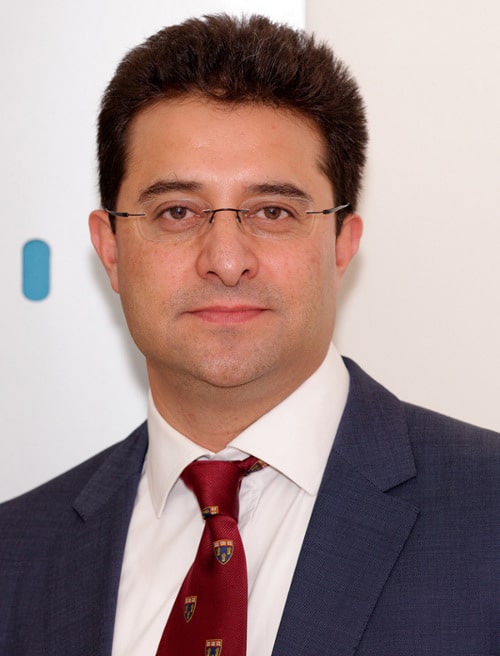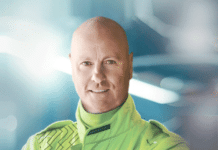Digital India is seen as a great opportunity by most organisations, but how it will eventually shape up is something that we will all have to wait and watch. However, companies like Cisco are fully geared up to get on the bandwagon with their digital strategy and technology solutions, and are viewing it as an initiative that will change the entire technology landscape. In a conversation with Open Source For You, Sanjay Kaul, MD, service provider business, Cisco India and SAARC, shared the company’s initiatives with respect to the Digital India movement. Excerpts:
Q How does Cisco plan to participate in the Digital India movement?
We are already into it. We have been involved in architecting the strategies for key stakeholders. For us, the journey started three years ago, with our concept of the ‘Internet of Everything’. We are working with service providers, setting up their connectivity layer, which is the foundation for Digital India. IP is what we have been doing for many decades, and I think that is what we are promoting – an end-to-end IP architecture. This is the first layer towards making Digital India happen, because on top of that connectivity layer, which is end-to-end IP, one can put an evolved service platform. That is where you can define how to extract value out of the connectivity layer. So for us the journey has already begun – we are in the midst of it.
I think something great that happened is that the government has now carved out a vision, which is phenomenal, and we totally believe in it. We are now moving from planning to execution. We are working on a number of fronts. We are working with service providers, states, municipalities, manufacturing hubs, and we see opportunities and projects all over the place. So, digitisation is happening and it is happening at a very fast pace.
Q How do you see the Internet of Things (IoT) space evolving with the Digital India concept? Do you see Cisco as a key player in the IoT revolution?
If you look back, the Internet of Everything or IoE was a slogan coined by John Chaves, who is our chairman. We always believed that digitisation has to happen, and I think it is happening around the globe. India needs to mature on many fronts. First is the connectivity front. And I think with the government’s great initiative of connecting the panchayats, this will be of great help. We are trying to bring in optical fibre up to the village level. Operators have already started working on it. There are places in rural India where there is no electricity, but operators’ mobiles work there.
We have also seen a good positive movement on the spectrum side. Digitisation will happen over the mobile. So we are working on all these fronts. We are into it and we are very optimistic about the opportunities open to us. The reason is simple – we have core competence in IP connectivity. Over the years, we have built assets in the company that are very relevant. All this gives rise to a lot of data. When the data is happening in abundance, a couple of things are very, very important, including how you collect this data, how you analyse it, et al. Data is perishable and has value only for certain hours. If it is not collected and analysed in time, no value can be extracted from it. So, this is another capability we are building – it’s called data analytics.
Then we have the cloud, which is a technology that will enable operators to reduce their opex. We can reduce their capex costs by up to 20 per cent. In many cases, we have helped them save about 65 per cent on their opex, which is what is needed in India. So we practically operate in all the domains of the Internet of Everything, which is very relevant to the digitisation business.
Q So, apart from government bodies, are you also working with private enterprises to encourage IoT and digitisation?
Oh yes! All smart CIOs or CEOs have digitisation on their agenda. If they don’t, I can assure you that they will not be around in 10 years’ time. Because someone out there is going to beat them, and we have seen examples of this. Look at what has happened to retail. We have seen examples across the globe where operations have been completely digitised, leading to 50 per cent more productivity. I think there will be millions of jobs created but these will be of a different nature. It will not be about moving physical goods or sitting at a retail shop attending to customers, but different activities.
Q The Internet of Things is IT, electronics and telecom coming together. So when you approach an enterprise, who do you think is the right person to talk to, generally? Earlier, the CIOs were approached because they knew everything about IT. But with the IoT, there is a lot more than IT
Some of the best-in-class companies have appointed Chief Digital Officers or CDOs. In case a firm doesn’t have a different person for this role, the CIO takes on this additional responsibility and will be called the CIO as well as the CDO. So I think it will vary from organisation to organisation. The telcos will probably have this function divided between the CTO and the CIO, because both parts have to digitise. So we will see different developments. But the best practice is to create a new role in the form of the Chief Digital Officer, who oversees digitisation across all functions. Because it is not only about digitising your network to IT – you are also digitising your finance department, HR and logistics.
Q Who is the real target audience when it comes to the consumption of IoT?
I think, typically, it’s CXOs. CIOs and CTOs can also be the target, because they understand what their CDO is proposing to the board.
Q And what is the importance of systems integrators or SIs in the entire scheme of things?
Systems integrators are just one piece in the jigsaw puzzle. When you go out and digitise industries, cities, manufacturing plants or mines, you have to form a team, or maybe even a consortium, which will include systems integrators as well.











































































